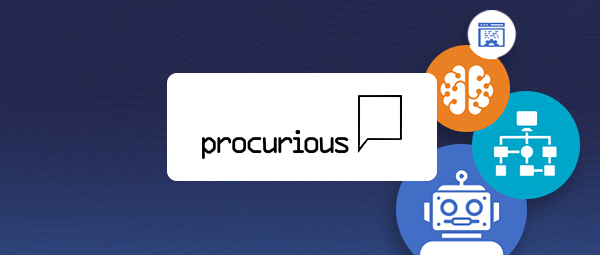Change in the modern business landscape is happening at an unprecedented pace, transforming industries daily. Procurement, in particular, must adapt to these swift changes to stay ahead.
Generative AI offers significant benefits for procurement organizations across all aspects of the source-to-pay process. One particularly interesting example is in extracting risks and summarizing contracts and agreements. This technology can quickly identify key insights and highlights from contracts, making it easier for procurement teams to understand the essential terms, risks, and obligations.
By presenting this information in a concise format, generative AI helps buyers focus on critical aspects of contracts, streamlining the validation and approval process.
In our recent AOP Live session, experts from Accenture, The Hackett Group, and Ivalua came together to discuss what procurement should be doing today to prepare for a future that includes Generative AI. Here’s a recap of what was covered.
The Post-Pandemic Shift: Risk Management Takes Center Stage
In recent years, there’s been a noticeable shift in procurement, emphasizing risk management alongside cost savings. This trend has been particularly pronounced since the COVID-19 pandemic, which highlighted vulnerabilities in global supply chains.
“If we went back before 2020, we didn’t necessarily see risk as a top ten priority for organizations,” said Christopher Sawchuk, Principal and Global Procurement Advisory Practice Leader, The Hackett Group. “What COVID did for us was to expose vulnerabilities within our supply chains, specifically from a supply assurance perspective.”
But risk is broad, Sawchuk said. A past Hackett Group study highlighted eight types of supply risk including not only supply chain risk, but also such categories as information security and reputational risk.
The focus on risk management remains strong due to ongoing geopolitical uncertainties and other global issues, Sawchuk said. As a result, procurement organizations are increasingly adopting generative AI to manage risks more effectively.
Generative AI tools can quickly analyze contracts, identify potential risks, and summarize key terms, helping procurement teams make more informed decisions and maintain operational resilience.
In addition to addressing risk management and cost savings, Sushil Srinivasan, Managing Director, Supply Chain and Operations, Sourcing & Procurement at Accenture, said generative AI is helping procurement meet new demands for Business Partnering, Ecosystem partnering and Innovation, Sustainability & Resilience and Category Strategic Planning. Post-pandemic, role of CPO must increasingly look at 360-degree value.
Conversational GenAI capabilities will act as the first “entry door” for business partners asks to Procurement (spend/savings reports, market intel., …) improving visibility, response time and enhancing User Experience, augmenting communication with requesters and suppliers, and automating compliance and administrative tasks.
Another example will be Category Strategist to be augmented via GenAI to drive internal and external insights generation, accelerating Category Strategy development.
Thus, introduction of Gen AI capabilities and use cases has potential to enhance procurement’s value and impact within organizations, thus allowing it to play a strategic role in the C-suite.
Trusting Generative AI in Procurement
What’s it going to take for procurement to trust generative AI enough to rely on it for critical areas like contracts?
This is a pivotal question as organizations incorporate AI in their procurement processes – and building trust involves demonstrating its reliability, accuracy, and ability to handle sensitive tasks. By addressing these concerns, procurement organizations can begin to see AI not just as a tool, but as a valuable partner in their operations.
Sawchuk emphasized that trust in generative AI must be earned over time, much like interpersonal trust. Initially, organizations use a “human in the loop” approach, where humans validate AI-generated results to ensure accuracy.
Eventually, when AI consistently produces accurate outcomes, organizations may decide to fully trust the AI without human oversight. This gradual process is key to integrating AI in critical procurement areas.
Pascal Bensoussan, Chief Product Officer at Ivalua, added that building trust in generative AI from a product perspective hinges on transparency – clearly showing users what data is being used and how the AI generates responses.
This includes detailing the sources of information, whether from the internet, documents, databases, or the user’s input. While younger generations may trust technology more readily, it’s essential for users to think critically about AI outputs. “Over time, as users see consistent accuracy and clear explanations, their trust in the system will naturally grow,” Bensoussan said.
Use Cases of Generative AI in Procurement
There are numerous use cases for AI in Procurement, beginning with supply management. Interestingly, The Hackett Group’s 2023 Key Issues study revealed a balanced landscape: about 50% of organizations were actively exploring generative AI technology, while the other half had yet to make significant strides in this area.
One of the most insightful aspects of the study was pinpointing where professionals believe generative AI will have the greatest impact. Two areas stood out: spend analytics and contract lifecycle management. From a list of approximately 30 supply management activities, these two were identified as the most promising for AI-driven transformation.
In spend analytics, generative AI offers the ability to aggregate and analyze vast amounts of spending data, providing deeper insights into spending patterns, cost-saving opportunities, and budget forecasting. It can also predict future expenditures by analyzing historical data, thereby helping organizations budget more accurately and identify potential cost reductions.
In terms of contract lifecycle management, generative AI can streamline the contract review process by rapidly identifying key terms, conditions, and potential risks across numerous contracts.
In situations involving natural disasters, such as earthquakes or hurricanes, AI can quickly assess affected suppliers and contracts, evaluating terms that safeguard supply continuity and organizational revenue.
This is particularly valuable for parsing unstructured data and deriving actionable insights, a traditionally challenging task for procurement teams.
Additionally, AI can automate compliance and monitoring, ensuring contracts adhere to regulatory standards and organizational policies, thereby reducing the risk of non-compliance and improving governance.
What else can Generative AI do for Procurement teams? According to Sushil Krishna Srinivasan, it can:
- Streamline procurement by reducing the “ping pong game” of communication between business users and supply chain.
- Guided sourcing processes and ensure correct requisitions and faster RFP launches as an LLM taps/processes organizational policies.
- Virtual Supplier help desk to handle supplier inquiries about payment statuses, reducing escalations and freeing up procurement to focus on strategic tasks.
- Ensure efficiency and accuracy through automation, enhancing overall procurement operations.
Learn more about Generative AI use cases developed by Accenture Supply chain networks I the age of generative AI and by Ivalua Generative AI in procurement use cases.
Despite the promise shown in these areas, The Hackett Group’s study also highlighted that the potential impact of generative AI is not yet fully recognized across the board.
Even in the promising field of contract lifecycle management, only about 60% of organizations acknowledged its significant potential. This finding suggests that the procurement sector is still in an exploratory phase, understanding and experimenting with AI applications across various processes.
According to Chris, this exploratory stage is crucial. “What it really told us is that we’re really in an exploratory phase, where we’re just learning what generative AI can do and the impact it might have on all of the activities in supply management,” he said.
AI’s Disruptive Potential
The business case for generative AI is built around three key dimensions: automation, augmentation, and advisory, each contributing to more efficient and intelligent operations.
During the webinar, Bensoussan emphasized the disruptive potential of generative AI, highlighting its insatiable need for data and its evolution into a multi-modal tool that can handle text, images, and sound. He explained that generative AI essentially functions as a “calculator of words,” producing new outputs from vast amounts of input data.
The technology’s versatility means that its use cases are continuously expanding, and Bensoussan stressed the importance of having an open platform to accommodate this growth.
“At Ivalua, we leverage our unified platform and data model to create a no-code configuration for generative AI,” he said. “This setup allows any configurator to seamlessly take data from the screen, database, or any documents and create requests effortlessly.”
From content creation such as drafting emails and policy announcements or RFPs to document analysis, market intelligence and process automation, the possibilities for AI to streamline procurement are virtually limitless.
“The number of use cases had to be open,” Bensoussan said, adding that innovation will come from customers and partners as well as internal research and development.
Read Now: Transforming Procurement with Generative AI: A Practical Approach
Off the Shelf or Build Your Own?
The speakers agreed that investing in generative AI should not be viewed merely as a technology project but as an opportunity to reimagine an organization’s operating model. This involves establishing a robust data foundation and developing organizational capabilities.
Starting with foundational – or “canonical” – use cases for generative AI is crucial for building intuition and expertise, Bensoussan said. These initial applications help users understand how to effectively prompt large language models.
Generative AI represents a new form of programming that relies solely on natural language, eliminating the need to learn traditional coding languages like C# or Java. Instead, users need to communicate clearly and precisely.
Despite the challenges, configurators, partners, and business translators are well-equipped to develop these use cases. By testing and iterating on prompts, they can create robust and reliable solutions. As LLMs continue to improve, the process of developing and refining AI applications will become increasingly easier.
Read Now: AI in Procurement: The Ultimate Guide for Procurement Professionals
Will Procurement Professionals Be Replaced by AI?
Not necessarily. “Over the next five to seven years, generative AI is expected to significantly impact organizational activities, leading to an estimated 46% reduction in staffing levels,” said Sawchuk. This impact will vary by functional area, with procurement experiencing changes slightly later than others.
“Organizations have a choice: they can either eliminate the activities affected by AI and reduce their workforce accordingly, or repurpose the freed-up employees to focus on different tasks.” he said.
Sawchuk highlighted the importance of preparing both data infrastructure and human capital for effective AI integration. AI will become part of the organizational capital, and existing employees will need to be retrained with new skills to thrive in this transformed environment.
This transition presents an opportunity to reimagine supply management practices and roles – and while many use cases for generative AI will originate from procurement professionals who understand their specific needs, Bensoussan believes the deployment of generative AI should be a company-wide initiative.
From a technology perspective, organizations will likely deploy their own large language models (LLMs), hosted either on public clouds, private clouds, or on-premises, using various open-source models or proprietary ones from providers like OpenAI, Google, or others.
It’s important, Bensoussan explained, to fine-tune these models with the organization’s data and feed them with a private library of documents to ensure the LLMs are aware of internal policies, intellectual property, and other critical information.
“We built Ivalua’s Generative AI capability to seamlessly orchestrate between the application interface in Ivalua and the large language model (LLM),” he said. “This allows our customers to easily integrate their own LLMs, simply pointing the orchestration to a different tool or calculator.
Having this open perspective is crucial because, while procurement can drive many practical and innovative use cases, the technology will ultimately be managed by IT and span across all departments.”
Watch the full webinar on Generative AI And The Future Of Procurement. You can also learn more about Ivalua’s Intelligent Virtual Assistant, which leverages generative AI to automate and simplify critical tasks and procurement processes from Source-to-Pay.




